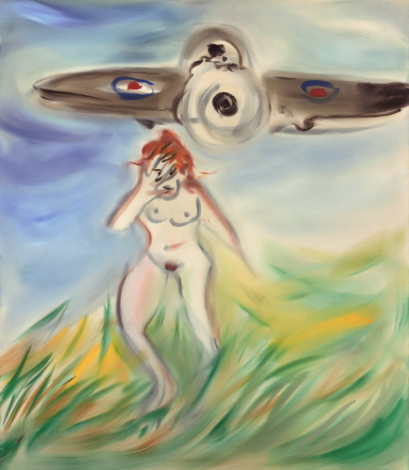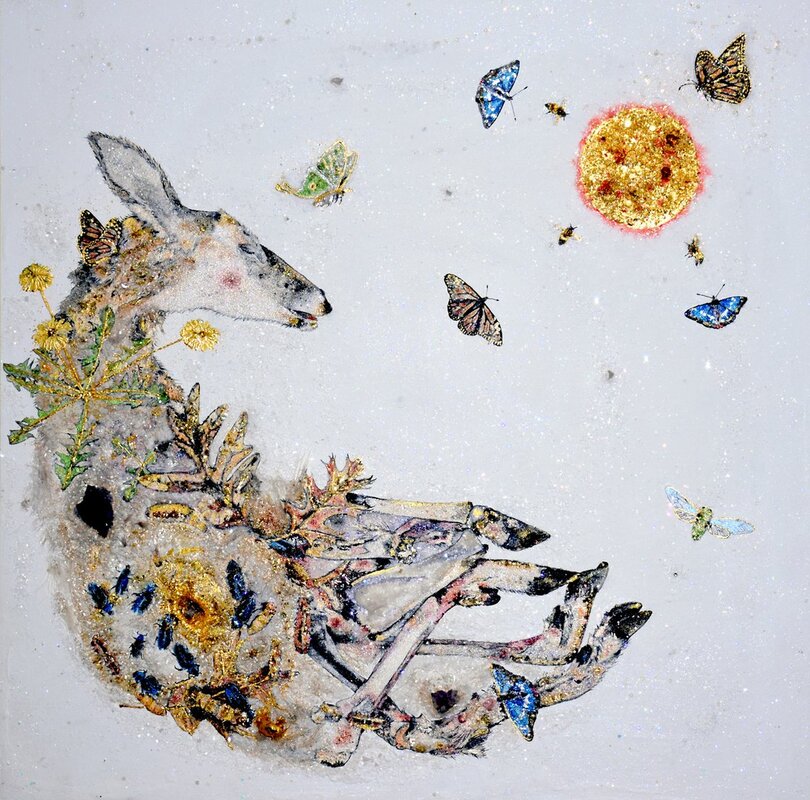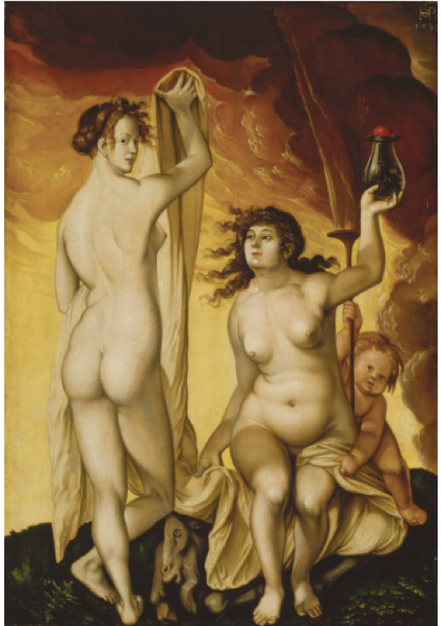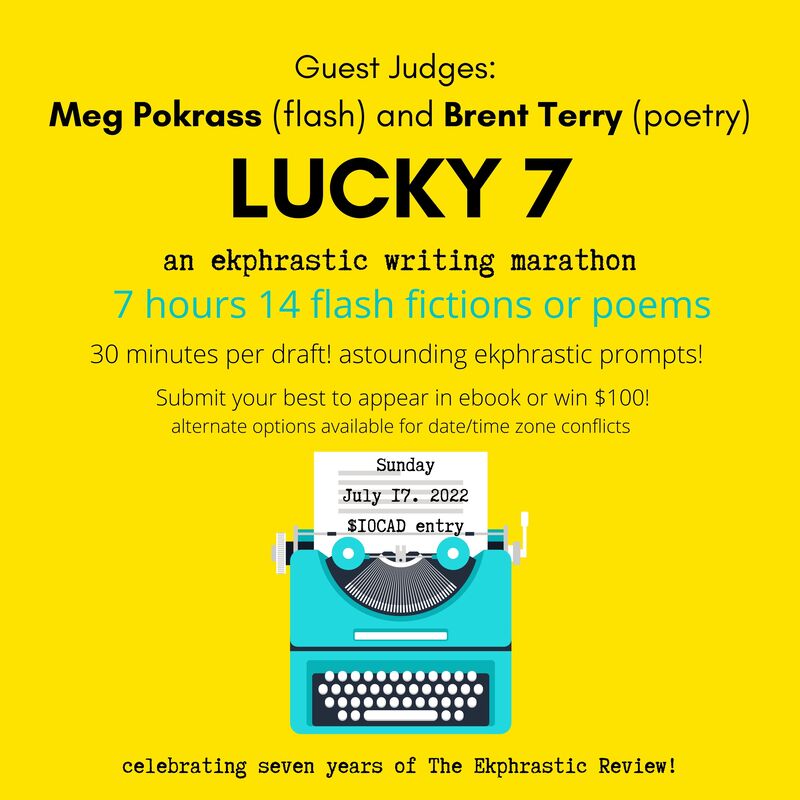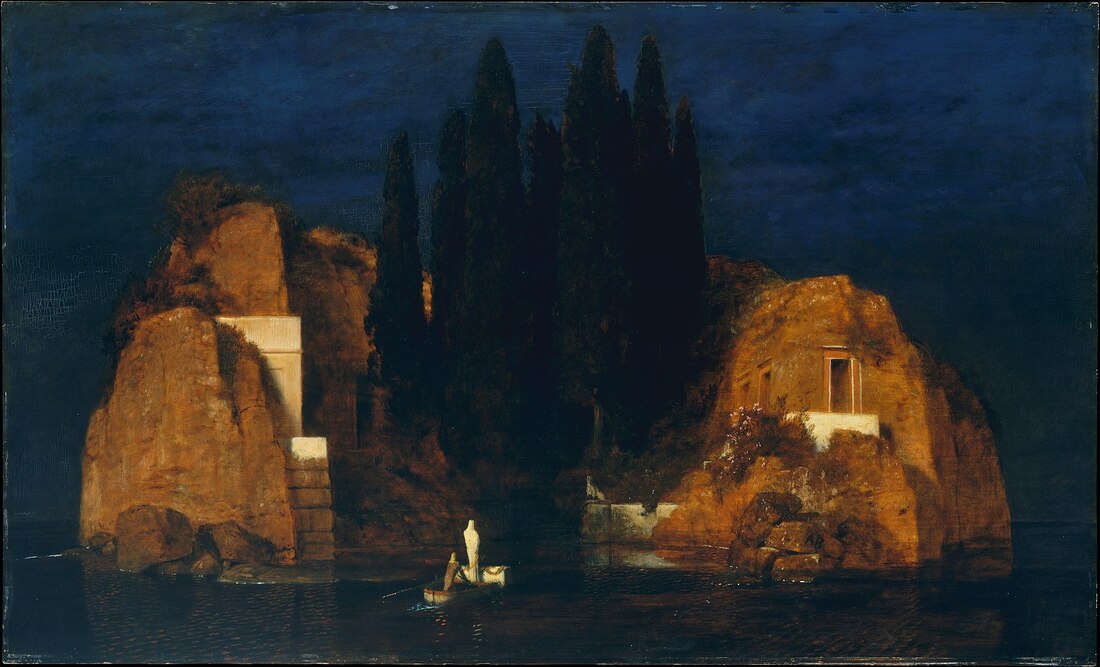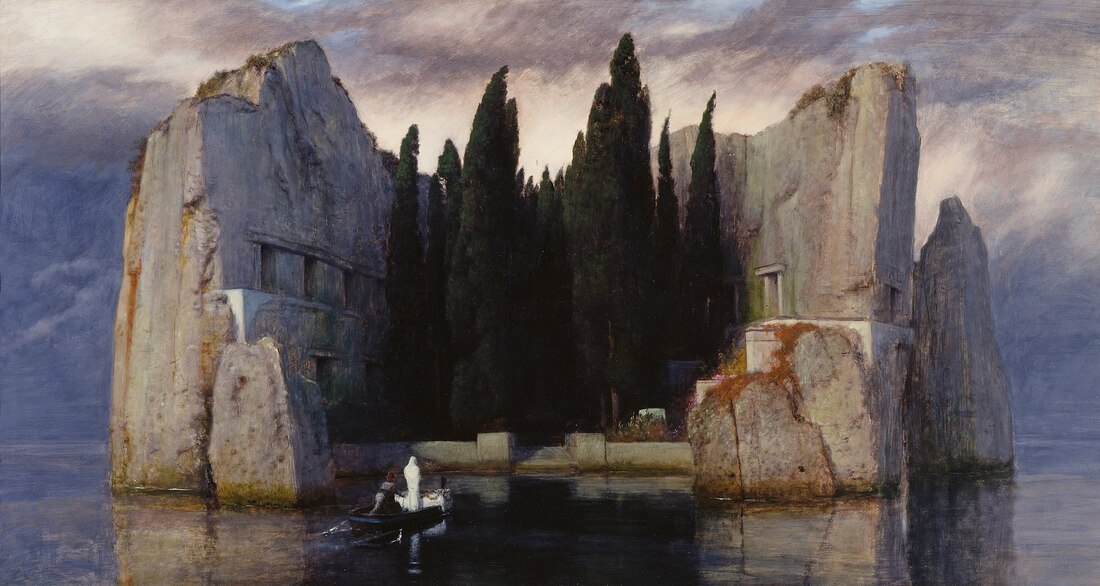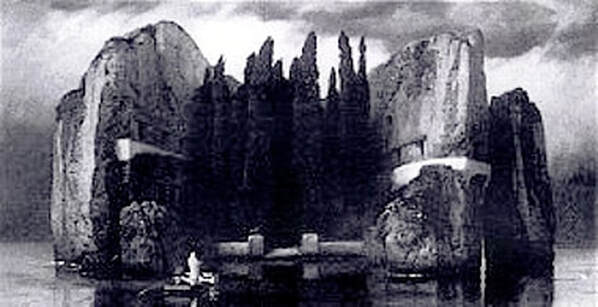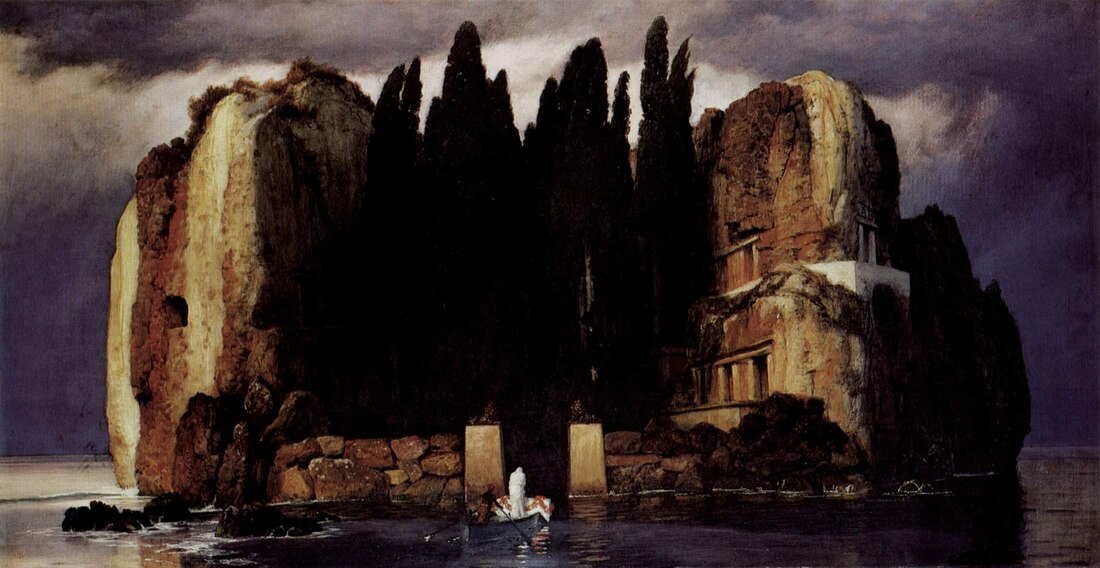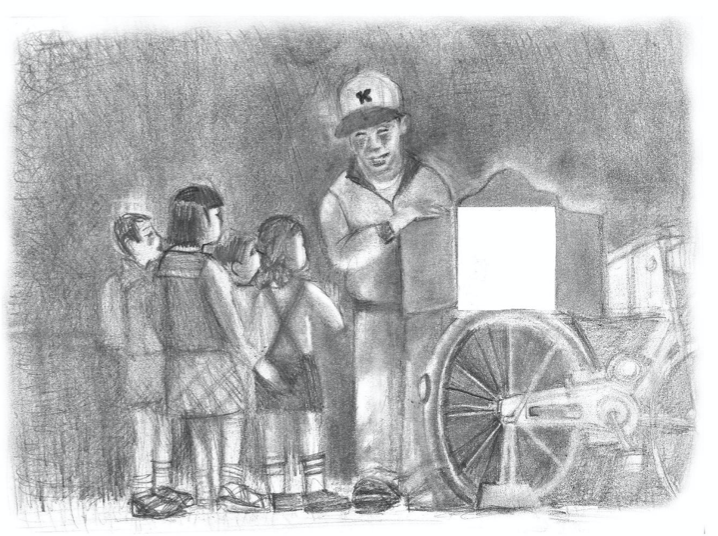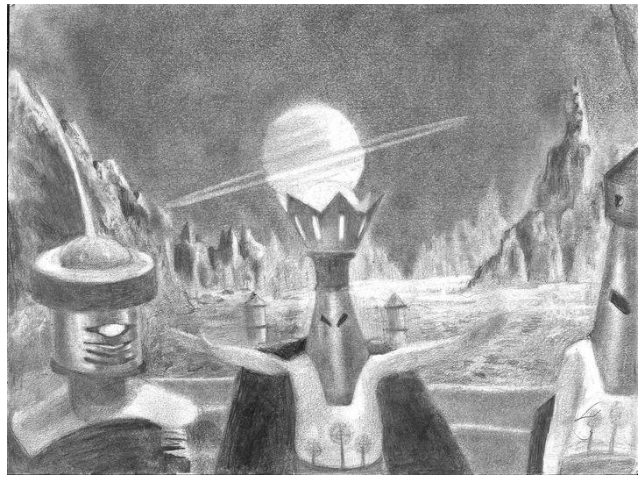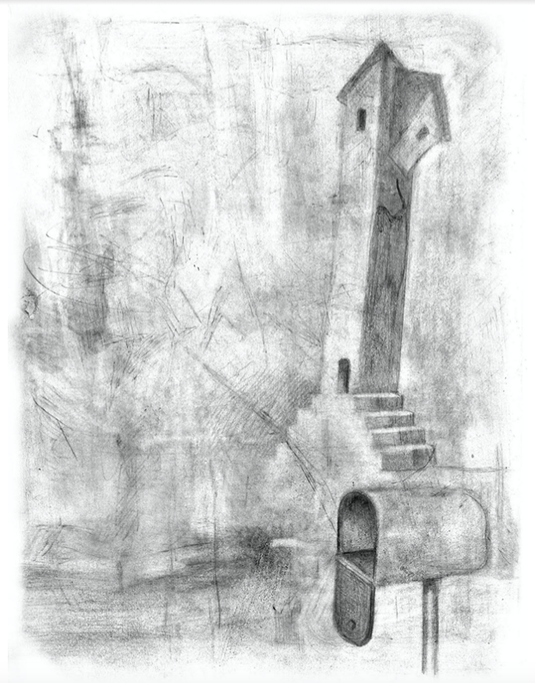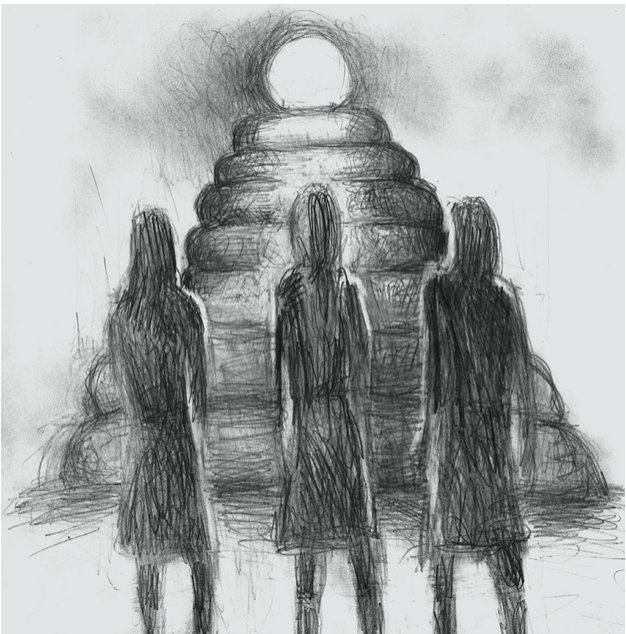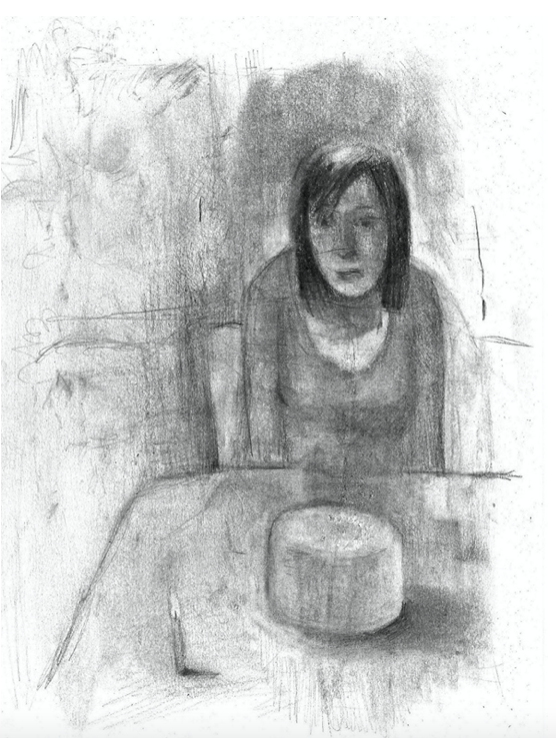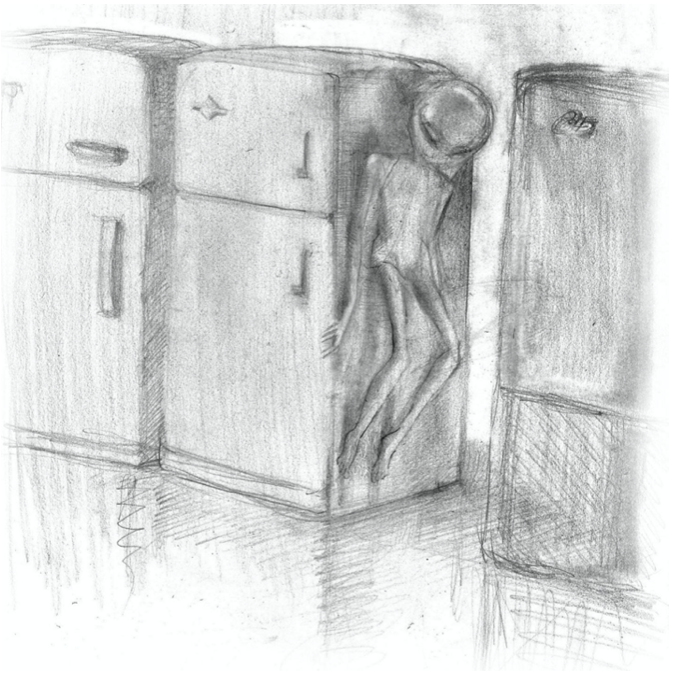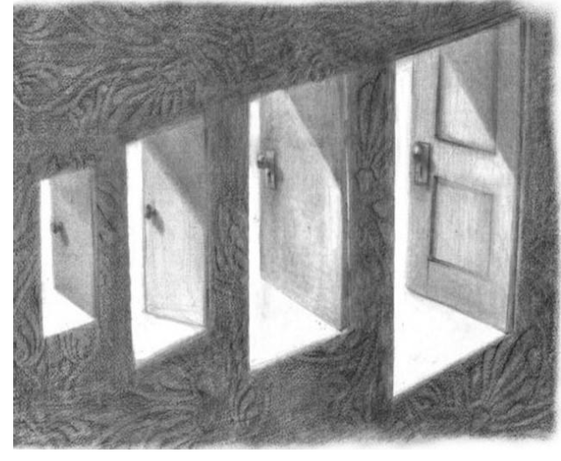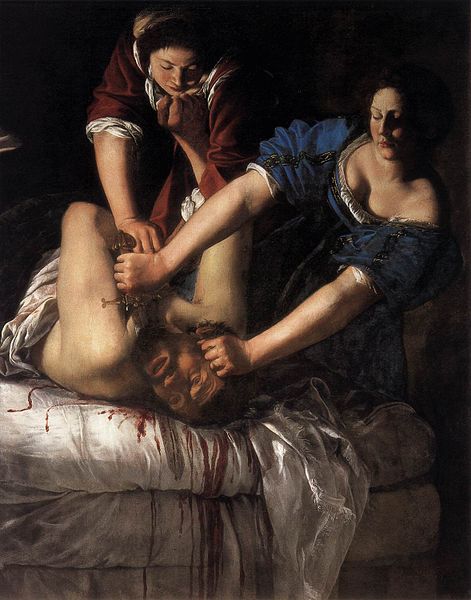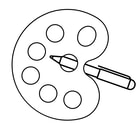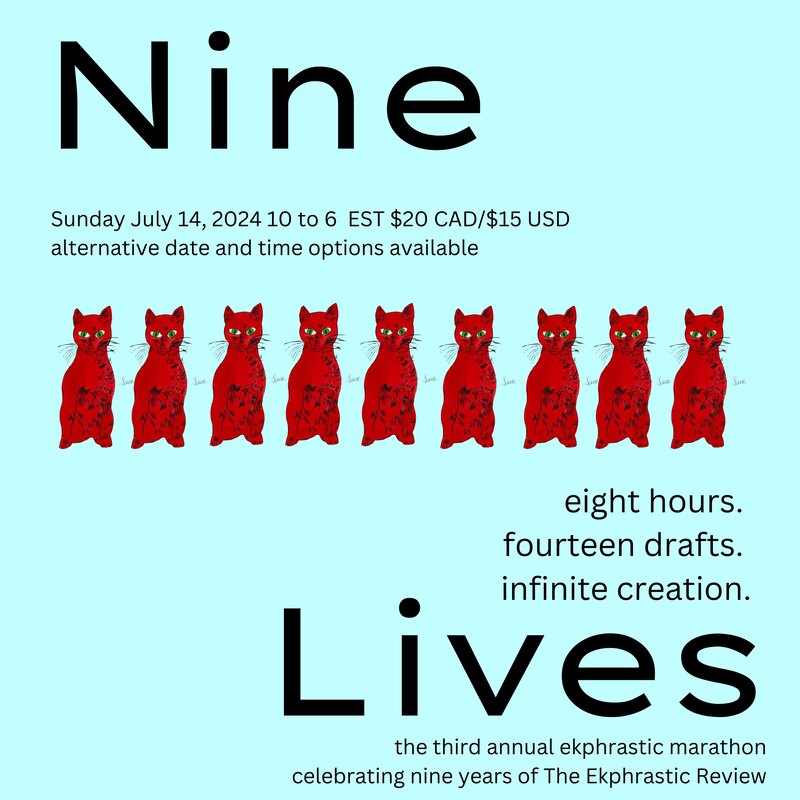|
On Hotham Park, August, 1942 The Channel ruffled its cheesecloth beyond Hotham Park, under a sky-trail of hieroglyphic contrails, Spitfires, black-crossed Messerschmitts and Wolfes. With sharp faces we cheered the home-side kills, the falling fighter's pirouettes, the tail-spun crumps and fiery columns cloaked as failing comets. None imagined the panicked gauntlet grappling with a stick when the cock-pit jammed, how far they were from home, what dying here revoked. But what was it in our upturned childish faces, what threat did he suppose, this airmen turning back towards the land when home was calling? We watched him turn, a glint shown on his cock-pit glass with fire sent flickering from each wing, not reckless Phaeton in a burning chariot, some other thing, a hot-shot teenage air-ace working children from the bone. Adam Cairns Adam Cairns is a poet and photographer who lives in South Wales. He can often be found shivering and wet trying to photograph birds. When he warms up, he sometimes writes poetry. @AdamAcorns
0 Comments
Churchillian Haiku Hell: when your cane slips & blood drips on head shoulders knees & toes sink but keep going... Ekaterina Dukas Ekaterina Dukas has studied and thought linguistics and culture at Universities of Sofia, Delhi and London and authored a British Library publication on Mediaeval art. She writes poetry as a pilgrimage to the meaning and cherishes its surprises, dramas and out of the box gifts. Her poems appeared in various journals, including The Ekphrastic Review. Her collection Ekphrasticon is published by Europa Edizioni, 2021. The Deer (after Alexa Karabin) and here is where you closed your eyes curled thin legs deflated after I drove off in a panicked blur remorse keeping me awake till now when I return to speak regret crouched in woody scurf and duff I turn myself in throw myself on the mercy of your still heart as a jewel sun decides to rise in earnest turning you golden and the air fills with skippers mulberry wings swallowtails and blues who know nothing of sin or why I lay ferns and leaves over cut and wound sitting shiva as beetles begin their service garlic mustard and hellebore nod your tongue still fragrant with corn and apple fur dew-shining my whispered mea culpas stir the hair at your ear scant reparation for all that’s been taken Lynn Pattison Lynn Pattison is author of Matryoshka Houses (Kelsay Press, 2020) in addition to three other poetry collections: tesla's daughter (March St. Press); Walking Back the Cat (Bright Hill Press) and Light That Sounds Like Breaking (Mayapple Press). She has been nominated for the Pushcart Prize numerous times and for inclusion in Best Microfiction. Pattison’s work has appeared in Ruminate, Moon City Review, New Flash Fiction Review, The Notre Dame Review, Rhino, Smartish Pace and numerous other publications. Witch/Hysteric after Anne Carson’s “The Gender of Sound” Always evenings, naked, unafraid, glass pitcher on my shoulder, goat’s head severed under foot, a fist—amputated—resting, aback my neck. The crowd behind me like a crowd behind me always behind me, jeering, whispering, fielding all I say, even the sound of my voice. Escape me I escape you: words tattooed across my body: left breast; right, my belly—a mouth: open, painted in blood: menstrual or goat--does it matter? If I crouch, let whatever wants to run from me run; if I contort, head, arms, shoulders between my legs, throw myself—acrobatic—from the highest board or cliff, will the apology be enough? My incantation is clean. Enough the usurper, the thief. We banked the tampons, the extra-strong deodorant. We drank the perfume. We covered our hair with cotton cloth. There was no more space. Just the dark bush before me growing darker, disappearing. A symphony of cicadas to mark the way. Join me. No eye teeth, no rusted knob. No more champagne. Pear-assed and perfect, I am your wet dream, my voice stolen; my violence intact. Rachel Neve-Midbar Poet and essayist, Rachel Neve-Midbar’s collection Salaam of Birds won the 2018 Patricia Bibby First Book Award and was published by Tebot Bach in 2020. She is also the author of the chapbook, What the Light Reveals (Tebot Bach, 2014, winner of The Clockwork Prize). Rachel’s work has appeared in Blackbird, Prairie Schooner, Grist and Georgia Reviewas well as other publications and anthologies. Her awards include the Crab Orchard Review Richard Peterson Prize, the Passenger Poetry Prize and nominations for The Pushcart Prize. Rachel is a current PhD candidate at The University of Southern California where her research concerns menstruation in contemporary poetry. She is also editor of Stained: an anthology of writing about menstruation for the AuntFlo2020 Project. More at rachelnevemidbar.com Lucky 7: an Ekphrastic Marathon Try something intense and unusual- an ekphrastic marathon, celebrating seven years of The Ekphrastic Review Join us on July 17, 2022 for our craziest challenge yet! It’s an ekphrastic marathon! With amazing guest judges, Meg Pokrass for flash, and Brent Terry for poetry. Write to fourteen different prompts, poetry or flash fiction, in thirty minute drafts. We will gather in a specially created Facebook page for prompts, to chat with each other, and support each other. Time zone or date conflicts? No problem. Page will stay open for one week. Participate when you can. The honour system is in effect- thirty minute drafts per prompt, fourteen prompts. Participants can do the seven hour marathon or two sessions of 3.5 hours. Polish and edit your best pieces later, then submit five to our Lucky 7 e-chapbook. One poem and one flash will win $100 each. Thank you to our flash judge Meg Pokrass for the marathon technique. Marathon: July 17, 2022 10 am to 6 pm EST (including breaks) (For those who can’t make it during those times, any hours that work for you are fine. For those who can’t join us on July 17, catch up within one week.) Story and poetry deadline: July 31, 2022 Up to five works of poetry or flash fiction or a mix, works started during marathon and polished later. 500 words max- include a brief bio, 75 words or less Chapbook e-anthology selections and winning entries announced sometime in September. We are delighted to have guest judges Meg Pokrass and Brent Terry. Meg Pokrass is the queen of microfiction, with nearly (or over?) a thousand journal credits. Her flash is widely anthologized in both small press publications and Norton’s. She is the founder of the Best Microfiction Anthology series and the New Flash Fiction Review. She has been a guest judge for many flash contests, at Mslexia and Fractured Lit. Meg is also well known for her microfiction workshops and creativity prompts. She is the author of The House of Grana Padano (with Jeff Friedman), The Loss Detectors, Spinning to Mars, and many more. Brent Terry is an award-winning writer and a runner who teaches at Easter Connecticut State University. He won the Connecticut Poetry Prize and was nominated for the PEN Faulkner Award for fiction. He is the author of The Body Electric, Troubadour Logic, and 21st Century Autoimmune Blues, among others. He is an accomplished Spoken Word artist. He loves Dr. Pepper. Böcklin: Das Toteninsel Böcklin painted the picture five times as if he knew he was going there eventually outlining along the way not to miss anything this is the way artists sometimes work as if to store the moments without thinking about what to make of them as they stock up there are some who think he has painted the picture of the Island of the Dead after the English cemetery in Rome where Shelley lies after giving up the spirit under much persuasion some of the cemetery trees there are clearly growing on the Island of the Dead in Böcklin's painting there are some who believe that a Greek island near Corfu must have been Böcklin's inspiration for the island, the Island of the Dead, though everyone knows that it lies inside himself this can be clearly seen in the painting it's as if life steps forward and says: Let me just hold this anxiety and so Böcklin can paint on as if the Island of the Dead sets up its abode within him and lives in him for the rest of the time he has before he must go there himself some people think that man is not immortal that it must go to the Lake of Death everyone carries as a birthmark and that it lies in the sea whose dark surface always breathes lightly, day and night full of malevolent dreams only the time spent is the time under way to the Island of the Dead time that stands still while life moves on lasts forever there is a boat on its way in off the island like another Charon sailing the souls of the dead over Styx to the final resting place of the dead in Hades, the underworld where all shrub is colorless until each person comes upon a thought or an image of the mind or a runic word taking a shape corresponding to the surroundings ultimately comprising their colour Böcklin's Island of the Dead has no gates one can sail in there directly past two pillars standing there, namelessly it could be the pillars Boaz and Jakin that stood outside the first temple of the Jews erected in front of churches all the way up through Tuscany as a reminder of how pillars can be guardians of sacred entrances as long as they bear names whose origin is known Böcklin's columns hold unknown names and between them is not a stone ground floor but the sea that carries the island and the boat you arrive on, as well as all the thoughts there are no gates at the entrance to Böcklin's dead island the sea carries one there one does not need to have an access card when one has arrived one has come in a sole movement the solitary movement of the breathing of the sea the island is not guarded, the white back on the ferryman is not Charon it must be Böcklin himself if it is true that the Island of the Dead lives in all of us and that we all hear the waves the boat is decorated but no one can know by whom and where it has been executed, perhaps by someone who once bought it or inherited it on the first editions of the painting there is a staircase up on some of them there are no columns the trees grow differently in the different versions just like in dreams some years the white figure who is Böcklin himself stands upright in the boat but always seen from the back just as one always sees a human being who is dead from the back because he has no soul anchored in a figure some years the white figure is more bent over as if death has been entangled in an underground field of reeds or grasses or has been wrapped around the legs of someone lying down there every night in dreams or around the oar and the long barge pole by which the boat is moved forward what one does not know is if the white figure when he has arrived and left the boat with inaudible sighs are supposed to stay in the abandoned buildings on the island behind the tall sturdy conifers maybe they are not abandoned, just not inhabited yet the buildings on the island are becoming more and dilapidated as the years go by in Böcklin's painting, in the first versions the air is fresh around them and the sunlight reaches them in the last version of the Island of the Dead the buildings are quite differently darkened to one side there is a tall building with windows - there could be books in there one might be able to sense that time existed in there that time actually was a place and not a void that it moved when one was there to the other side are the ruins of a cave in there, there are no books and if there were they would be damaged dirty, musty one would not care to hold them in one's hands The boat is led by a helper dressed in a decorated suit, and as the years go by he becomes more and more naked as if man shows more of himself while shame seeps into the walls and in through the cracks there and is soaked up by the water, decreases like a flow of waves Böcklin talked about the second picture Das Lebeninsel, the Island of Life and it is known he painted it but no one has come upon it, it has not been seen ** Danish: Böcklin: Das Toteninsel Böcklin malede billedet fem gange som om han vidste han skulle derhen til sidst og ville skitsere undervejs for ikke at gå glip af noget det er den måde kunstnere nogle gange arbejder som om de kan opbevare øjeblikkene uden at tænke på hvor de skal gøre af dem efterhånden som der bliver mange af dem der er nogle der mener at han har malet billedet af dødeøen efter den engelske kirkegård i Rom hvor Shelley ligger efter at have opgivet ånden under megen overtalelse visse af kirkegårdstræerne vokser tydeligvis på dødeøen på Böcklins billede der er nogle der mener at en græsk ø nær Corfu må have været Böcklins inspiration til øen, De dødes ø, selvom alle ved at den er inde i ham selv det kan man tydeligt se på maleriet det er som om livet træder frem og siger: Lad mig lige holde den her angst og Böcklin maler videre som om De dødes ø tager bo i ham og lever i ham hele resten af den tid han har inden han selv skal derhen nogle mennesker tror at mennesket ikke er udødeligt at det skal hen til den dødsø alle har inden i sig som et modermærke og at den ligger i havet hvis mørke flade der altid duver let, dag og nat fuldt af onde drømme kun den tid der er forbrugt er tiden på vej mod dødeøen den tid der står stille mens livet bevæger sig lever evigt der er en båd på vej ind på øen som en anden Charon der sejler de dødes sjæle over Styx til de dødes endelige opholdssted i Hades, underverdenen hvor alle vækster er farveløse indtil den enkelte finder en tanke eller et sindbillede eller et runeagtigt ord der tager form efter omgivelserne og til sidst rummer deres farve i sig, Böcklins dødeø har ingen porte man kan sejle direkte derind forbi to søjler der står der, navnløse det kunne være søjlerne Boaz og Jakin de to søjler der stod udenfor jødernes første tempel og som er rejst foran kirker hele vejen op gennem Toscana som mindet om hvordan søjler kan være vogtere af hellige indgange bare de har navne hvis oprindelse er kendt Böcklins søjler bærer ukendte navne og mellem dem er ikke stengrunden men havet som bærer øen og båden man kommer i og alle tanker der er ingen porte ved indgangen til Böcklins dødeø havet bærer en derind man skal ikke have adgangskort når man er ankommet er man der i én bevægelse i havets åndedræts uforlignelige bevægelse øen er ikke bevogtet, den hvide ryg man ser på færgemanden er ikke Charon det må være Böcklin selv hvis det er sandt at dødeøen bor i os alle sammen man hører skvulpene båden er dekoreret men ingen kan vide af hvem og hvor det er sket, måske af nogen der engang har købt den eller arvet den på de første udgaver af maleriet er der en trappe op på nogle af dem er der ingen søjler træerne vokser forskelligt på de forskellige versioner ligesom i drømme i nogle år er den hvide skikkelse som er Böcklin selv opret i båden, men ser ham altid fra ryggen sådan som man altid ser et menneske der er død fra ryggen fordi han jo ingen sjæl har der er fast forankret i en skikkelse i visse år er den hvide skikkelse mere krumbøjet som om døden er blevet viklet ind i et underjordisk område af siv eller græsser der har viklet sig om benene på en der ligger dernede hver nat i sine drømme eller om styrepinden og den lange åre båden stages frem ved det man ikke ved er om den hvide skikkelse når han er kommet frem og har forladt båden med uhørlige sukke skal være i de forladte bygninger der er på øen bag de høje faste nåletræer måske er de ikke forladte, de er blot ikke beboede endnu øens bygninger bliver mere og forfaldne som årene går i Böcklins maleri, i de første versioner er luften frisk omkring dem og sollyset rammer dem i den sidste version af dødeøen er bygningerne helt anderledes dunkle til den ene side er der en høj bygning med vinduer, der kunne være bøger derinde man kunne måske opleve at tiden fandtes derinde at tiden faktisk var et sted og ikke et tomrum at den gik når man var der til den anden side er der ruiner af en hule derinde er ingen bøger og hvis der var ville de være skadede mugne, jordslåede man ville ikke bryde sig om at have dem i hænderne båden er ført af en hjælper klædt i en dekoreret dragt, som årene går bliver han mere og mere nøgen som om mennesket viser mere af sig selv mens skammen siver ind i væggene i de sprækker der er opsuges i vandet og aftager som et bølgeskvulp Böcklin har talt om det andet billede Das Lebeninsel, livets ø og man ved han har malet det men ingen har fundet det, ingen har set det Jakob Brønnum The Danish version was originally published in the collection Øjeblikkets tredje tilstand [The Third State of The Moment] (Det poetiske bureaus forlag, Copenhagen, 2018). Jakob Brønnum has published 41 books in Danish. His work has appeared in La Piccioletta Barca and Beyond Words Literary Magazine. He lives in Sweden with his family. Stories from the Picture Box I set up a picture box on a downtown sidewalk, near a bench, and a tree. I put a drawing in, opened the doors, and began: "Gaito Kamishibai ( GAI-toe Kam-MISH-e-bye—"Outdoor Picture-Story Show") is Japanese story telling using pictures displayed in a portable box, often perched on the back of a bike. Storytellers with boxes were a common sight on the streets of Japan from the 1920s to the late 1950s. During WWII, kamishibai was enlisted for government propaganda, and reached its peak after the war, in the seven years of the U.S. occupation, (1945-1952). Before radios, movies or televisions were widely available, it conveyed public announcements and propaganda from the U.S. authorities in visual form, but at heart remained cheap street theatre, and income for demobbed soldiers turned storytellers. Everyone was hard scrabbling to make a few yen in the rubble and chaos of post-war reconstruction, and their stories and pictures were the grubby desperate birth yowls of manga to come. (And, I wonder, what else? And who were the storytellers, really? They did it to survive. They sure didn't get an MFA to learn how. Did they mix the news and kids' stuff with their personal views, inner demons? Did they parse those things out at all, or narrate a gumbo of gonzo journalism and PTSD nightmares? Nobody was in control. In those ruins, and ours, the stories could, and can be anything). Wait, our ruins? This is not 1946 Japan, it’s 21st Century United States. There is no meaningful comparison, or equivalence. But we have inherited the shadows that were burned into Hiroshima brick; we carry the plutonium in our bones. If and how we own the trauma of our histories seems the only stories in the box worth telling, even if I don't know how to draw or write or tell those tales at all. What will we make or do with those bricks of irradiated shadow? Build shelters? Erect walls? Pitch them into tear gas? Drop them down a well of dreams to listen, breathless, for the plunk? I closed the doors. Atomic Rulers of the World I put a drawing in the story box and opened the doors. The audience was one kid on the bench, kicking his legs and sucking on a thick straw from a jumbo cup. He said, "What's this?" The straw rattled air. "It's called Atomic Rulers of the World.” He nodded. “This drawing is of a scene from a cheap Japanese TV series from the late 1950s, featuring a character called Giant Man, or Star Man. Episodes were lumped together and dubbed in English as movies for U.S. TV in the early '60s. The Saturn in the sky gently sways on piano wire. I first saw this on TV, home from school with a bad fever, a rubber ice pack on my forehead that hurt with cold and seemed to drive the fever into the film. Here the High Council is meeting to stop another planet from irradiating all the planets in the system, including Earth. They summon Star Man. He has a white suit and a cape. He flies to Earth to capture the radioactive device and stop the invaders. When he flies, the wires holding him make little peaks in his back. The actor who played him, Ken Utsui, went on to a distinguished film career. He hated playing Star Man. He had to stuff his crotch with cotton to make it look bigger. After a Japanese boy wearing a Star Man costume died jumping from a window, Utsui quit the role, and never spoke about it again.” “Cool. Thanks.” The boy hopped off the bench and dumped his empty cup in a steel mesh trash can. Ice cubes clattered against the metal and I took it for applause. He walked away and I closed the doors. Return to Sender I put a drawing in the story box and opened the doors. The audience was a young woman on the bench in a FedEx uniform with two girls, maybe six, and twelve. The woman slouched and thumbed her phone. The younger girl's dark eyes had a jaguar prowl. The older girl stared, attentive or dazed at the drawing through glasses like ice. She poked the woman and said, "Look Mom, Rapunzel." The woman's eyes didn't leave her phone. "What?" The girl asked me, "Is this Rapunzel, like, let down your golden hair?" "I don't know. It's called, 'Return to Sender.'" The mother stayed glued to her phone but grinned and nodded ruefully. "I know that one." She sang imitation Elvis: "Return to sender/Add-dress unknown! / No such number/ No such zone!" The girl said, "That happens to you in your truck, right mom?" "That happens to me in my life." She laughed. She squinted at the drawing and said, "You can see the mailbox is open. Rapunzel answered his call and let down her golden hair before he could check the mail, so he left it open and climbed her hair. But it was a wig and came loose when he was half way up the tower. He plunged to his death, never to see Rapunzel's face, or the letter returned to him from the unknown zone. The End." The girl shook her head. "That's not what happened." “No? OK, he saw the stamped letter and thought, what the hell, I’ll call blondie. Then he broke his neck.” The silent younger girl's voice was growly and startling. "That's the wizard's tower. He's sad. He can't spell anymore. And nobody sent him a letter today." I closed the doors. Azure Profundo I put a drawing in the story box and opened the doors. There was a chunky young guy and his friend, small and gaunt. The chunky guy hunched meekly on the bench but his skinny friend sat in a confident sprawl. Both wore drooping t-shirts displaying heavy metal bands in Spanish. I began: "In the mid-twentieth century, most neighbourhoods had a street ending in an electrical substation. On those streets there was always one family with twin girls, and sometimes, identical triplets. The buzzing from the insulating coils made the girls' braces into radios. Implanted I-Pods were born.” The bigger man raised his hand, as if in school. “This is a story, right? About a North American twentieth century?” “Yes.” “Because I was going to say, in Mexico every neighbourhood would have a maquiladora. A factory. Every street would have an asthmatic girl with a cleft lip. And I think the coil thing looks like a kind of chess piece. A pawn. When I was a kid me and my friends, we played a lot of chess. Chess and video games. I was a pawn man. My friends said when that computer, Azure Profundo, that Deep Blue, beat Kasparov in the ’97 rematch, it was the end of the Grand Masters, but I don’t believe that." His friend nodded vigorously and jabbed the other's shoulder. "You know what I think? I think that thing looks like a pile of poop. Poop with a light on top." "Dude ate a light bulb and shit it out." They both cackled, and the big kid added, "Remember what Trump said, that you could cure Covid by inserting a bright light into your body? Maybe he just swallowed the light and shit it out. That's Melania and Ivanka and what's her name, Ivana?—come see his last poop." All of us laughed. I closed the doors. Woman at Kitchen Table I put a drawing in the story box and opened the doors. I said, "This is called 'Woman at Kitchen Table.'" Two women had come by to rest on the bench. They wore mismatched shawls, scarves, long bright skirts and knit caps with the local university football logo, a swaggering badger. The younger, in her 50's, shelled a boiled egg on her lap. The older was short and stooped and bobbed her sandaled feet over the ground, grinning and chattering to her companion in Hindi, or was it Nepali? I could see my story would be talked over by Hindi, or Nepali. One of their cell phones rang with a Wah-Wah, "Failure" jingle. They let it ring. I began: "This is a woman having a birthday party of one." The older woman laughed. "One year old." I said, "I mean, she is alone." "No," the younger woman said, "No year. No candle in the cake." The other said, "Candle on the table." "She's a baby." "She's before baby. She's waiting for her number one birthday." I asked, "She's waiting to be born?" They laughed. I asked, "Where do you wait to be born?" The older woman shrugged impatiently. "At the kitchen table." I closed the doors. Smart Refrigerator I put a drawing in the story box and opened the doors. There was no one listening. “A husband and wife’s refrigerator got hot. At the appliance store the wife went to a row of ‘smart refrigerators.’ As the salesman talked, she took her husband’s hand and surreptitiously slipped him a small object, as if passing a file for a jail break. It was a little rubber alien, made of metallic blue gooey rubber. The salesman was saying, ‘These smart refrigerators can read recipes to you, leave messages on the touch screen door, show you on your phone their insides, without having to open the door. You can watch the inside, in real time.’ The husband said, ‘Why in the world would I want to do that?’ He gripped the tiny alien. The wife said, ‘If there is a child who has gone inside to play or hide, and becomes trapped, this feature could save their life.’ The salesman was alarmed. ‘That could never, ever happen today! No refrigerators on the market latch from the outside.’ He went on. ‘But say for example you are in the store and can’t remember if you are out of milk. You could ‘call’ your refrigerator and see what’s inside. Here. Let me demonstrate.’ He took out his phone and dialed a number. A video screen appeared with a gulp sound. He handed the phone to the couple. The husband looked at the white interior. ‘What’s that?’ On the top shelf was a little figure. The salesman said, ‘Huh.’ He opened the refrigerator, and inside was the blue rubber alien. ‘Some kid must have been playing around.’ The wife nodded with satisfaction. The husband opened his hand. It was empty and released a puff of chilled air.” “And they can watch you.” A tall woman in hoodie and sunglasses was leaning against the tree, smoking in the sun. “Smart is always watching.” I nodded and closed the doors. Matrimony I put a drawing in the story box and opened the doors. On the bench was a woman with a fisherman’s vest and tiny pug dog on a leash, curled and panting at her feet. I began: “A man married and had everything yet wanted only to be alone. Over the years the one thing he kept for himself was always waiting in the basement. His wife knew better than to ask, and had certainly never been allowed to see it, or interrupt him when he was working. Still, to be certain, he had installed multiple locks and doors in the back of the basement. These would have to be passed through to get to the work room. The first door was a cheap hollow wood door with a simple combination lock. Behind that was a sliding metal fire door with a pass code and a thumb print reader. Next was a steel blast door with a retinal scan, and a voice identification box. Next was a tiny door, like in Alice in Wonderland, just large enough to crawl through. Then a swaying curtain of clattering ceramic beads that analyzed skin particles off your hand or arm or shoulder, and that sprouted poison barbs if they registered any DNA but his own. The final door was like the first one, a hollow fiberboard slab with a metal hasp and a combination lock. This door opened into a blank white room, the work room. It was softly lit with a stretch of low, indirect lighting behind one wall’s baseboard. A single stuffed armchair sat in the middle, made of an inviting brushed material the color of seashells, on dark wood rockers instead of legs. He rocked. On the floor facing the chair was a black and white photograph of his wife. She was looking directly back at the camera, wearing no expression and no makeup, her hair pulled back and fastened into a bun. It was a new photo. He was always careful to keep it up to date. The rocking chair made a pleasing soft bump on the wood floor but otherwise it was still. He was safe from any disturbance, free to see his wife without worry or interruption.” The woman on the bench said, “This is why I live with a dog.” I nodded and closed the doors. Gregg Williard Gregg Williard is an artist and writer. His work has recently appeared in Conjunctions, Vine Leaf Press, Phoebe and Revolution John. The Week the Artist Died This was inspired specifically by the photograph of artist Ruth Asawa, reclining and holding one of her sculptures, by Imogen Cunningham (USA) 1951 I worked in Noe Valley for a year at the bookstore, close to my cousin’s house, though I avoided Anne’s loud laughter and easy confidences, she the daughter of our in-law friends in San Francisco. I walked the steep hills during my lunch break, thighs pounding the 45 degree lanes and horizontal streets the length of the hills. My favourite path was on Castro Street past the clock shop where a black cat sat next to a deconstructed clock like you’d find inside a large wood case in someone’s hallway, except here it looked like a surreal experiment. And I would often pass the house of an artist, dwelling of modern wood and glass without adornment. She was well known in the Bay Area for buoyant sculptures woven in the method of native American baskets. I thought of her as one of us. At that time, I didn’t know that she was among the art gods, that she transformed the sea inside onto the outside of her body. The shapes looked like loose fabric though tight where they shrunk or grew, like gourds. The forms made their way out, strange beings on their own, surging over the crests. And I wondered, did she try to name then? Did she rock with them back and forth, like she would with her young children? One after another the sculptures would teeter over due to the vast size. Then, one day I found out she died. Heard it from a customer at the bookstore who heard it from her husband who knew one of the children who saw the demise of her mother due to an autoimmune disease. The next day my cousin appeared at the back of the store as I was receiving new books into the computer. I sat on the tall stool, fingers at the keyboard. She wore a red blouse and jeans, her dark curly hair framing her face. She wasted no time in telling me about her diagnosis. Breast cancer. Yet she first wanted to talk about the artist who we knew so little. Not about the doctor who gave her the news, or her parents. And she asked how I was doing. My father died a few weeks before, and I’d been off work for a week. Then, how was my mother coping? I’d returned to work after spending time with my mother and didn’t pretend to smile, just kept my head down while hand-selling books, but mostly asked to work in the back. And she listened to it all. She also wanted to talk about her loneliness since the split from her husband. As if her other news wasn’t enough. Though she was raising two girls, she wanted intimacy. Did I know anyone? All this intersected together somehow and I saw her as fragile in all this. Her usual way of going on without pause, this time peppered with inquiry. And I think we both realized that just talking would help us. This time, through her pointed syllables, I recognized an opening. I realized that I knew it was there all along, the round woven shapes a possibility. Laurel Benjamin Laurel Benjamin has poetry forthcoming in Lily Poetry Review, Black Fox, Limit Experience, Word Poppy Press. Find her work in Turning a Train of Thought Upside Down: An Anthology of Women's Poetry, South Florida Poetry Journal, Trouvaille Review, The Ekphrastic Review (challenge finalist), California Quarterly, Midway Journal, MacQueens Quinterly, Wild Roof Journal, Tiny Seed, and more. Affiliated with the Bay Area Women’s Poetry Salon and the Port Townsend Writers, she holds an MFA from Mills College and lives in the San Francisco Bay Area. Twitter handle: @lbencleo More at https://thebadgerpress.blogspot.com Wonders of the World: Enchanted Buddha Fish Sing a Song of Purple So I’m standing in front of the Buddhist Master who’s ignoring me because he’s sitting in a cave draped in lion skin, and made of stone But that’s okay Because the stream surrounding him is filled with fish-gods who shimmer beneath the splendor of an autumn light drawing each moment into the mist of their water-shadows. Across the river an ancient monk meanders along a bridge its wooden planks drawing deep breaths each time he warns that there are ghosts wandering the bamboo groves And my son moves to my side to gaze into the cosmos spinning beneath us silken veils of blue, green, yellow, white centered by a glow soft as the moon halfway through its midnight journey Which causes me to wonder if it’ll be dark by the time we get on the Harley and ride down this mountain But that doesn’t matter as much as the fact that right now flames are devouring the jungle we’ll soon be driving through and we don’t even know it yet. My eyes drift back to the fish but the moment I turn they swirl toward panic, reversing direction in one swift movement their scales embracing the shape of a golden leaf before their neon blue descends toward the sorrow of purple and I toss them a piece of bread while asking them out loud Do you have any idea how beautiful you are? Karima Diane Alavi As a graduate student, Karima Alavi received a scholarship to study language, history, and art in Iran. After completing her Master’s degree in Middle East and Asian Studies in the U.S. she returned to Iran to teach. She later taught Middle East Studies at Sidwell Friends School in Washington D.C., and most recently taught Humanities, Art History, and Creative Writing at the New Mexico School for the Arts in Santa Fe. Karima moved to New Mexico to serve as director of the Dar al Islam Teachers’ Institute on ‘Understanding and Teaching about Islam.’ Her short stories have appeared on National Public Radio (All Things Considered), in Sufi Magazine, Voices of Islam, and online journals such as the Santa Fe Writers Project, Glint Literary Journal, and Tom Howard Winning Writers. Her novel manuscript, Merchant of Color, set in the Vatican and Iran during the Renaissance, won the David Morrell First Place Prize at the 2017 New Mexico/Albuquerque Author Festival, was a semi-finalist in the 2019 Faulkner-Wisdom Competition and, along with another one of her manuscripts, In the Shadow of the Tombs, was one of ten finalists in the 2020 Keats Literary Competition. Karima lives in Abiquiu, New Mexico, where the howl of coyotes and the prowling of skunks inspire her to stay inside at night and get more writing done. Sapphics for Artemisia Woman painter, eyebrows and lips tight twisted, saws through sinew, brushes on dark vermilion blood that pools on sheets and erupts in ribbons: deft execution. Holofernes lies like a birthing mother, knees contracted, wetting his bed with bleeding. Judith — midwife, murderess, woman painter -- ably attends him. Artemisia, lavish in flesh and velvet, bares her thick white elbows and roughened knuckles, bares her backward appetite keen for murder: fantasy killing. Knowing art historians, cataloguing yellow ochre, umber and chiaroscuro coolly point professional tidy fingers, none of them painters. Cara Valle Cara Valle is an English teacher and fitness enthusiast living in Virginia with her husband and four young children. Her poems have been published in Light, Mezzo Cammin, The Lyric, Think, Blue Unicorn, and other journals. |
The Ekphrastic Review
COOKIES/PRIVACY
This site uses cookies to deliver your best navigation experience this time and next. Continuing here means you consent to cookies. Thank you. Join us on Facebook:
July 2024
|
